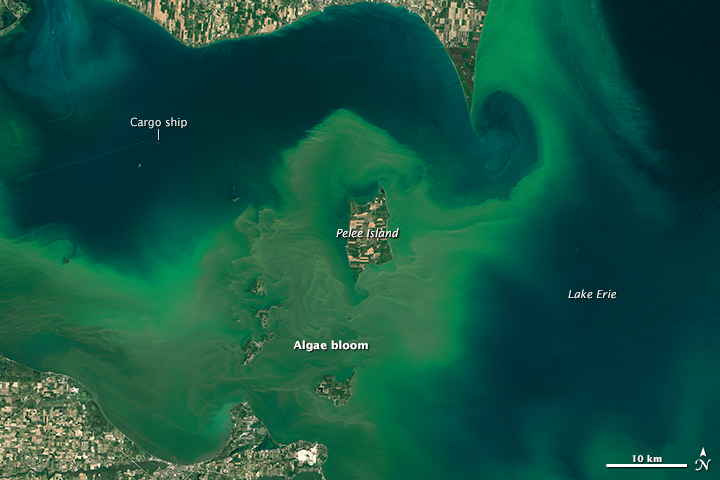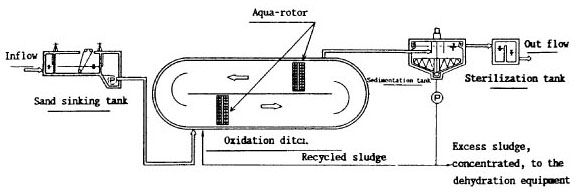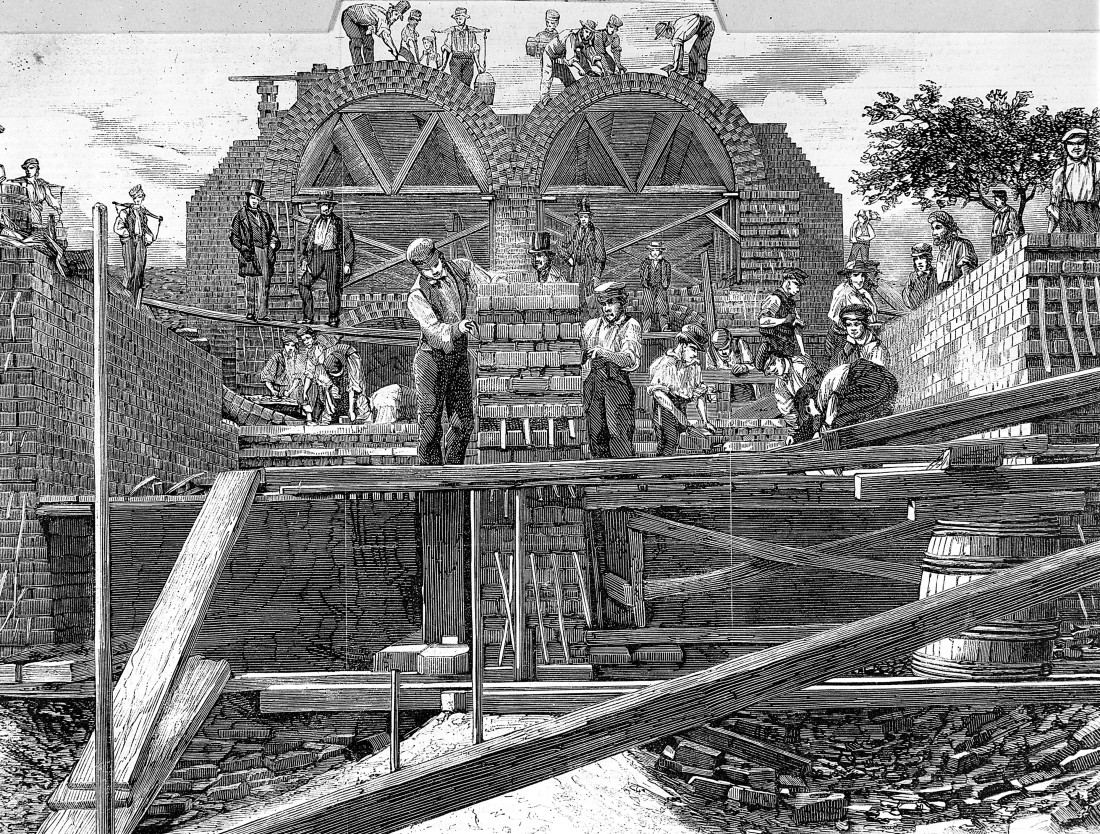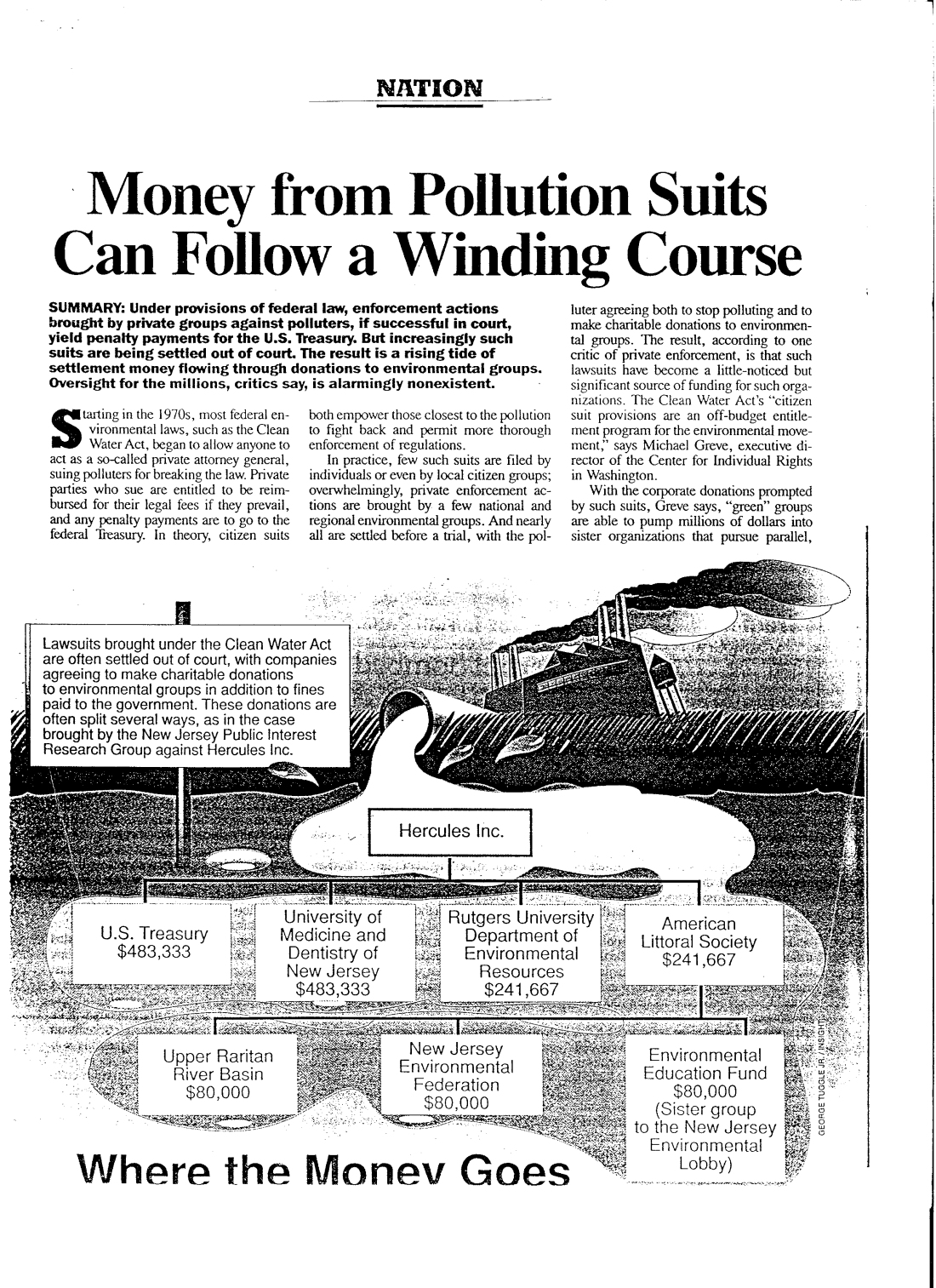The Silent Highwayman” (1858). Death rows on the Thames, claiming the lives of victims who have not paid to have the river cleaned up. Public Domain.
I met Peter Maier on Twitter where we got into a back and forth discussion about how the Clean Water Act is compromised by faulty water testing. Mr Maier should know. He’s a retired water and wastewater engineer who has been on a quixotic 37-year quest to get Congress, the EPA (Environmental Protection Agency), and the rest of the world to properly test wastewater for nitrogenous waste (urine and protein). Mr Maier has dedicated his life to correcting this faulty testing problem. I wanted to talk to him about why this test is so important, what the environmental collateral is, and why the environmental groups may not be so incentivized to press forward in getting the testing standards changed. This is a massive failure of society.
Michael Lee Nirenberg: I understand you’re retired now and have dedicated your life to a very specific environmental fight. Before we get there, what was your career and background?
Peter Maier: After receiving my engineering degree from Delft University in Holland, we emigrated in 1968 to Albany, New York and worked for NY State in water resources and flood control, focused on beach erosion and hurricane protection on Long Island. During a visit to Holland in 1973, I talked to a large consulting engineering firm, who had a patent on a sewage treatment system that an American investment group was interested in. They wanted somebody in Holland that spoke English and was familiar with Americans to show and explain all the advantages of this patented treatment. We moved back to Holland in 1974 and I was involved in many meetings and visits with Americans, but also visitors of other countries. Since this was not a full-time job, I was also a project engineer for building sewage treatments for a Dutch city, a Brazilian city, and several industrial waste treatment projects. I also had some opportunity to get involved in limited R&D.
The original investors lost their patent exploitation rights, which were taken over by a large equipment manufacturing company who offered to bring me to Salt Lake City to help them. Hoping to get more involved in R&D, I accepted and we moved here in 1978. After three years of experiencing corporate back-fighting, I was laid-off and started to work with another firm in Salt Lake City introducing equipment from Holland that was eligible to be used for this patented sewage system.
I failed. At practice of that time, I also spoke out during public hearings about the fact that the essential BOD (Biochemical Oxygen Demand) test was not correctly used and that we did not know how sewage was treated in the old plants, while millions were going to be spent replacing them. Unable to find work in this field of engineering I had to move on in other engineering fields, but in my free time, I kept trying to correct this BOD testing.
MN: Explain to me in the simplest terms possible what the current testing standards are in the Clean Water Act.
PM: Although the goal of the CWA was to eliminate all water pollution by 1985, EPA was allowed to initially demand ‘secondary treatment’, or what many thought was 85% treatment.
So when EPA established sewage treatment for their NPDES (National Pollutant Discharge Elimination System) permits, it used the 85% treatment criteria for two pollution tests. The BOD5 (Biochemical Oxygen Demand test after 5 days) and the TSS (Total Suspended Solids) test. Since both in raw sewage are about 200 mg/L, NPDES permits demanded that treated sewage did not have more than 30 mg/L (15% of 200 mg/L) of BOD5 and TSS. Unfortunately, since the BOD5 test only represents 40% of the total BOD, EPA in fact only demanded 85% of 40% or 33% BOD treatment and officially ignored all the pollution caused by nitrogenous (urine and protein) waste, while this waste also is a fertilizer for alga.
MN: Just so the rest of us understand this, 5 days is not long enough of a BOD (Biochemical Oxygen Demand) to give an accurate reading of pollution in water? Is it because nitrogenous waste is still present in the water after five days? What is the larger environmental impact of nitrogenous waste (urine and protein) in water?
PM: Let me first give you some history about the BOD test. Around 1900 it was developed in England to evaluate how sewage impacts the dissolved oxygen level in rivers. Sewage contains carbonaceous (fecal) and nitrogenous (urine) waste. Both are food sources for two different types of bacteria and when they consume this waste, they need oxygen, causing a depletion of dissolved oxygen in receiving waters, with all the consequences.
The BOD test holds an example of sewage, at a certain temperature for as long as all the food is consumed and measures the depletion of the earlier supplied oxygen. While the test measures the oxygen depletion in the sample, it represents the consumption of both types of bacteria and the consumption of course also depends on their activity and their presence, especially also how fast they grow.
Since urine is sterile, the amount of nitrogen feeding bacteria is very limited in human waste, while they also grow slower than those plentiful available bacteria feeding on fecal waste.
When the BOD test was developed, they used very fresh sewage, hence contained not many bacteria feeding on nitrogenous waste. The conclusion was that during the first 6 to 8 days, these bacteria did not contribute to the oxygen depletion reading in the test sample, hence that the 5-day reading (BOD5) represented only the consumption by bacteria feeding on fecal waste.
It takes 30 days to consume all the food provided and, since the oxygen consumed by the bacteria feeding on nitrogenous waste, also could be calculated with the much faster TKN (Total Kjeldahl Nitrogen) test, it became common to use the 5 day reading, multiplied with a factor 1.5, for the oxygen use by bacteria feeding on fecal waste and the TKN test multiplied by the factor 4.6 to establish the oxygen use by bacteria feeding on nitrogenous waste. The total BOD was calculated with the following formula: 1.5 x BOD5 + 4.6 x TKN
Generally assumed is that raw sewage has a BOD5 value of 200 mg/L and a TKN value of 40 mg/L. Thus, while the BOD5 is only 200 mg/L, the total BOD is 1.5 x 200 + 4.6 x 40 = 484 mg/L.
Since the BOD5 test wasn’t suited for daily plant operation, it is was used for open water studies and used to establish if waste was biodegradable. It was also used to establish how sewage was treated. Unfortunately, when governments started to set sewage treatment standards, they only used the BOD5 reading and ignored, some say forgot, the fact that this only represents part (40%) of the total BOD, thereby ignoring all the nitrogenous waste. Other problems later showed that the absence of bacteria feeding on nitrogenous waste, during the first days, was only valid for very fresh sewage, not for sewage exposed to the naturally occurring carbon and nitrogen break down cycles. That the BOD5 test solely represents C-BOD is a faulty assumption.
Is nitrogenous waste dumped into rivers? The answer is yes since it is not required to be treated under the CWA!
Which waste has the larger impact on our environment? In my opinion, the largest negative impact comes from nitrogenous waste. Not that it only directly exerts an oxygen demand, about 60% of that caused by fecal waste, but that this waste in all its forms in the nitrogen breakdown cycle (urea — ammonia–nitrate) is a fertilizer for algae and per pound stimulates about 20 pounds of algae.
These algal blooms are a problem, but when they die, they again become a carbonaceous food source for bacteria and thus demand oxygen, causing the depletion of dissolved oxygen, noticeable as dead zones. EPA’s latest argument that Congress solely address oxygen depletion pollution from sewage under the CWA, does not make any sense if one looks at the total impact picture.
MN: The last part is what I was looking for. I cannot follow much of the science above. I’m not trained in it. We started talking over Twitter that the Clean Water Act is not stringent enough of a test.
PM: The issue is not if the CWA is stringent enough, but that EPA never implemented the Act, due to a faulty application of the BOD test. If EPA had used the BOD test correctly, nitrogenous waste would have been acknowledged as a pollutant and would have been incorporated in the required standards for their NPDES permits.
Since 100% treatment was not possible initially, EPA was also supposed to promote and publish what BAT (Best Available Treatment) was. EPA never did, even after one of its own reports in 1978 acknowledged that much better sewage treatment was possible (including nitrogenous waste) and that such treatment could be built and operated at lower cost, compared to conventional systems not able to treat nitrogenous waste.
This report, by the way, was the result of a large group of EPA engineers visiting Holland in 1975 to study this patented system and the Dutch regulations, based on the principle that polluters will pay. In case of discharges, even treated sewage effluents, the fees levied do include all the oxygen-robbing pollution, including the nitrogenous waste. Since this patented system did take care of nitrogenous waste and was less expensive to build and operate, it became one of the most popular systems in the world, although its success is not related to the patent itself, but to the biochemical process it made possible to apply for large treatment facilities.
As far as engineering, the correct BOD testing is essential to find out what type of waste is in raw sewage. Sewage treatment plants are like confined feedlot operations, except we need the bacteria to feed on the waste, to get rid of this waste. To create the best holding areas, we have to know what type of waste is in sewage. Presently most engineers design plants for this assumed carbonaceous waste, hence you need carbon eating bacteria. If however, the waste is nitrogenous, you need different bacteria, who do need special conditions. Since correct testing is hardly available, in some locations correct testing has shown that a large part of the incoming raw waste is nitrogenous and that this waste is not treated. Multimillion-dollar facilities designed to treat the wrong waste!
MN: Wow, so what you’re saying is we have waste treatment plants all throughout the world that only treat carbonaceous waste but not nitrogenous waste? Was this purely an economic decision that governments have made?
PM: As I explained, this all started with the wrong application of the BOD (Biochemical Oxygen Demand) test, which at that time was commonly used for its 5-day reading (BOD5) without any nitrogen data. Although later the argument was used that demanding treatment of nitrogenous waste was not economically justified since most rivers were not that oxygen sensitive. Adding to this was that most thought that in order to achieve nitrogen or phosphorus treatment, we needed a second treatment process after primary treatment. We would need a completely new treatment, also called tertiary or advanced treatment. This higher cost argument probably was used as an excuse by many politicians not to investigate this issue. This argument is incorrect since the simple oxidation ditch performs all these treatment processes in one step and consequently is less expensive compared to systems that achieve these processes in three different treatment steps.
MN: Is there anywhere in the world doing it right? Before we got in touch I heard anecdotally that the Netherlands has a very progressive sewage treatment system. Is that so?
PM: In most countries, unlike the USA, as far as I know, they all use the BOD5 with the nitrogen test. None use the C-BOD5 test with the nitrogen test, not even in The Netherlands. The Dutch regulations are based on the ‘polluter has to pay’ principle. The Netherlands is the river delta of two major already polluted rivers, the Rijn and the Maas. Demanding treatment for cities or industries dumping their wastewater in these waters, we are talking in the sixties, would not do much, so the Government started this ‘you pay if you pollute’ program and used these collected fees to subsidize sewage treatment for cities discharging in less polluted waters.
The pollution unit to set such fees was the amount of oxygen your waste exerts on the receiving water bodies, which for sewage means C-BOD and N-BOD or the total BOD. Since most existing conventional sewage treatment systems did not treat N-BOD, cities still had to pay for their treated sewage discharges and like any government program, these fees only increased annually.
This was the reason engineers, who normally would design conventional systems, would look for treatment processes that would also take care of the N-BOD or the nitrogenous waste. That is when they got interested in the oxidation ditch, developed by Dr Pasveer in 1948. A simple oval shaped ditch that was able to take care of both C-BOD and N-BOD and was often already used for smaller communities, as they required more land.
By using this new patented aeration system it became possible to use the same biological processes for large cities. What some have called a progressive system was a system developed in 1948 and initially rejected by engineers, until regulations changed and then it became the most popular system.
MN: How would you change the existing testing standards?
PM: The first thing that should happen is to make people aware of this incorrect testing and start testing correctly, by not only testing for BOD5 but demand testing for C-BOD and N-BOD. The C-BOD5 test multiplied by 1.5 for total C-BOD, while the N-BOD can be tested with the TKN (Total Kjeldahl Nitrogen) test and multiply this value with a 4.6 factor. Only with this information will we be able to establish how sewage is treated and what the effluent loading is on receiving water bodies.
As far as regulations, they should not establish standards, but simple, as the Dutch do, fine discharges. This not only provides funds for enforcement but will force engineers to build sewage treatment plants that will provide the best possible treatment, to keep the fines low.
Most people presently think that better sewage treatment is also more expensive. This is not true since better treatment actually is cheaper than the conventional facilities we now build, based on more than a century old technology solely developed to control odors.
MN: I know nothing about this so my questions may be a bit naive. Bear with me- I’m a bit confused about the waste treatment we currently have. What you’re saying is we are treating waste in a way that only addresses odor with century-old technology? Above, you mentioned that we erroneously only treat carbonaceous waste but not nitrogenous waste. Is carbon-based treatment only for the odorous aspect of pollution?
PM: While many cities developed along rivers to conveniently get rid of their waste, sewage in the late eighteen hundreds did cause nuisance problems, like we now have with feedlots.
The main drainage of the Metropolis. Public Domain, date unknown
Sewage treatment started in the late 1800s, first by settling out solids, and what proved not to be sufficient to prevent odors. This process was called primary treatment what was extended with a biological process, whereby bacteria feed on the waste that was causing the odor problems. Urine will cause odor problems, but only when the urine hydrolyzes into ammonia, what happens when you leave dirty diapers too long in the diaper bag.
Since these secondary treatment processes, developed more than a century ago, did work (more or less), they became the conventional solution applied when cities required sewage treatment, even in cases when such treatment was required to protect open waters.
Until the public became more aware of their environment in the sixties, sewage was not very popular and was not given much attention. So when governments started to establish regulations, those involved mainly relied on their existing knowledge that was solely focused on secondary treatment. Even harder to admit, knowledge was limited and was mostly based on empirical and personal data. Testing at that time was also mainly focussed on BOD5 and TSS (Total Suspended Solids).
When Congress passed the CWA it certainly intended to include nitrogenous waste, but it was simply ignored when EPA used the BOD5 test without any nitrogen data. When it established sewage treatment standards for its NPDES (National Pollutant Discharge Elimination System) permit system. There simply is no other explanation why this nitrogenous waste was ignored.
MN: You emailed me an article last week about the political and economic reasons why environmental groups haven’t pushed Congress for better testing. I’m embedding it here because it’s very important to follow the money. Please explain

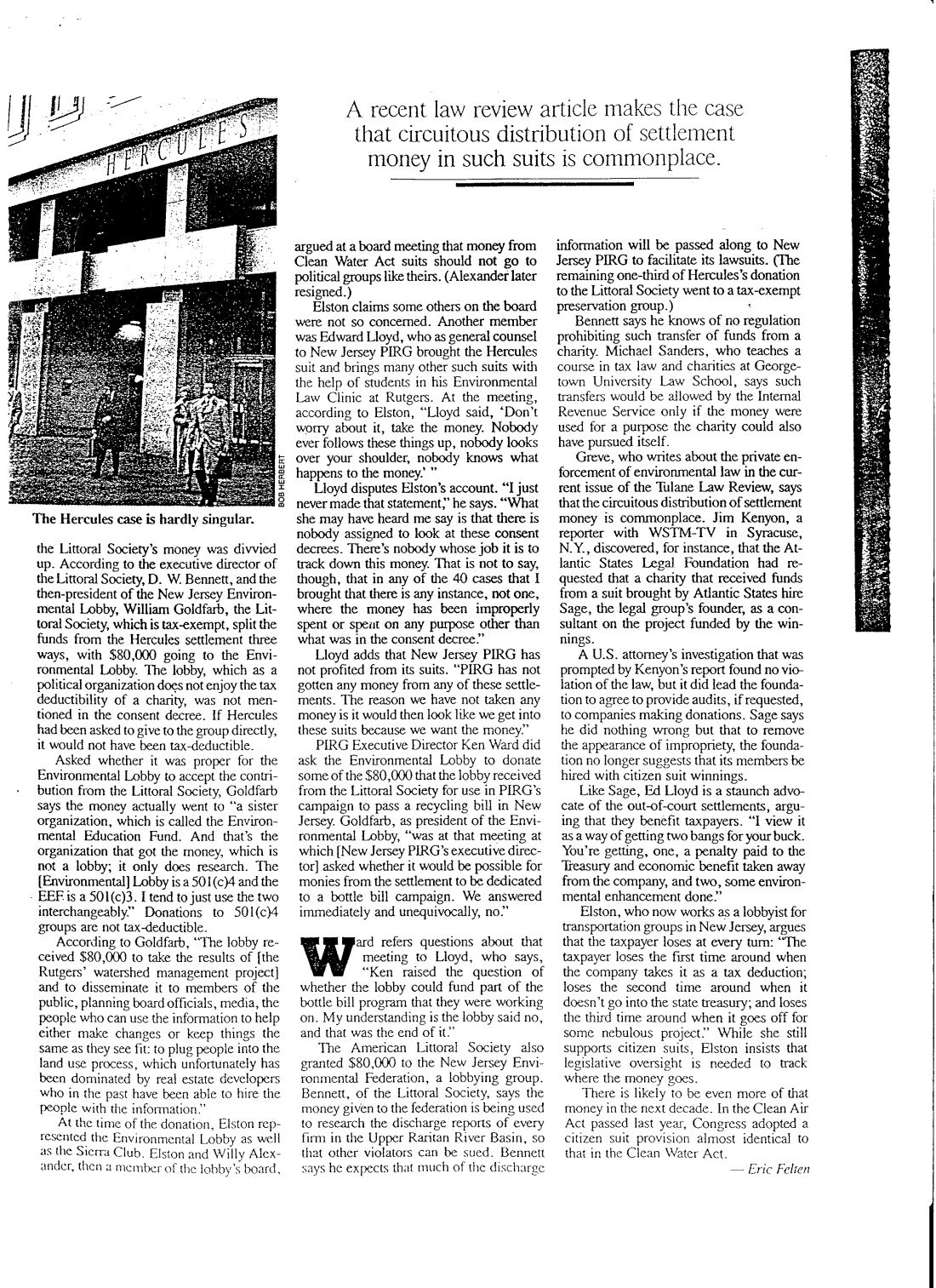
PM: Many sewage treatment plants had NPDES permits, whereby the BOD5 test reading of their effluents had to be below 30 mg/L, all still based on the assumption that this would be solely carbonaceous BOD (C-BOD). As explained earlier this was not the case and a large portion of this BOD5 reading was already nitrogenous BOD, a waste not required to be treated.
Let me give you an example of two treatment plants treating the same sewage, i.e. BOD5 = 200 mg/L and TKN = 40 mg/L, while the total BOD = 484 mgL.
Plant A. Effluent BOD5 = 25 mg/L while TKN still is 40 mg/L.
Total BOD= 37 + 184 = 221 mg/L. Or 45% BOD treatment efficiency, but in compliance with its NPDES permit.
Plant B. Effluent BOD5 = 40 mg/L, while TKN is 20 mg/L.
Total BOD = 60 + 92= 152 mg/L. Or 69% BOD treatment efficiency, while the plant is violating its BOD5 permit.
Since you can’t stop the bacteria feeding on nitrogenous waste, most secondary sewage treatment plants will have some nitrification (as its activity is also called), but how much depends on certain conditions. If we look at the treatment achieved in simple low cost oxidation ditches, effluents will have a BOD5 of less than 10 mg/L and a TKN of less than 10 mg/L. The Total BOD will be 15 + 46 = 61 mg/L. Or 86% BOD treatment efficiency, a treatment easily achievable that can be improved.
All three systems are considered secondary treatment.
Many permit holders in the seventies violated their NPDES permits because their BOD5 was larger than 30 mg/L. Because of this obvious fact they either had to be modified or replaced, while some were taken to court for obviously violating their permits.
Many lawsuits were brought forth by environmental groups, who then settled such cases out of court. Thereby enabling the violators to use these settlements as a tax write off, while environmental groups could divert such settlements to friendly organizations. If such cases had been decided in court, all the fine money would have gone to the federal treasury and violators could not have used them as a tax write off. Win-win for environmental groups and permit violators, but not for taxpayers.
As is shown in the Insight article.
When I approached many national environmental groups in the early eighties to support my efforts to correct this essential BOD test, none responded positive, clearly being afraid that NPDES violators who settled out of court would start testing properly and try to get their settlements back. Why they keep refusing such requests up until now, you would have to ask them.
EPA finally in 1984 acknowledged the problems with BOD testing, but instead of simply applying the BOD test correctly, it allowed the addition of a special chemical to the test, that only kills the bacteria feeding on nitrogenous waste, hence prohibited any nitrification. The test is called the inhibited BOD5 test or C-BOD5.
By allowing this C-BOD5 test, in spite of setting a little bit stricter 25 mg/L limit, EPA, by administrative rule, without informing members of Congress, not only still ignored 30% of the C-BOD, but ignored all the pollution caused by nitrogenous waste. Not only the N-BOD, but also the fact that this waste is a fertilizer for alga.
MN: I think the above stated politics and money is at the heart of the problem. I can imagine that all of the environmental groups who’ve settled out of court will deny they have a preference for these settlements than to actually do the job of enforcing these fines in court, which would go towards the damaged parties; i.e. the people. I’ve spoken to a number of these people and they seem genuinely concerned about the welfare of the environment. What has happened when you tried to contact these environmental groups? Who did you talk to?
PM: When Congress passed the CWA and would pay 85% of the construction cost of the now required sewage treatment, many cities saw an opportunity to replace or modify their old sewage treatment facilities. Here in the Salt Lake Valley they first had to establish several sewer districts and these districts would build new larger sewage treatment plants to replaces several old ones. All that planning and engineering was done when I started to speak out during public hearings. Here in the valley alone were plans for two new large facilities and the expansion of the Salt Lake City plant. The finances of two plants were already approved by Congress, but the new Reagan Administration was not releasing any money and was reducing its contribution, only willing to pay for existing capacities, not the capacities dreamed up for future growth.
You asked me how people can fight back? Wrong person to ask. If I knew, we would already test our sewage better, build better sewage treatment plants and have implemented the CWA as it was intended. However, a good start would be to remind professionals of their code of ethics, especially the first one that protects the interest of the general public.
This was the public stage in 1982 when I started my activities trying to correct this BOD testing. Nobody was happy. Imagine all that work for nothing and possibly, after correct testing, starting all over and losing all those free federal dollars.
The obvious solution was to shift any responsibility to Washington, claiming the state was bound by the federal regulations and that therefore any change would have to come from Washington. I do not know how many letters I wrote to politicians and environmental groups, like NRDC, Sierra Club, EDF, CBF just to name a few, but I never received a response. In a few cases, I did get an enquiry for more information, but after I did send that information, that was often also the end.
In 1992 we petitioned the to EPA to modify its secondary treatment regulations and publish what best available technology (BAT) should be (we, being several environmental groups here in Utah, and some local chapters of large national organizations, like the Sierra Club and Fly Fisherman Society). But after EPA rejected our petition and we sued the EPA, those local chapters were not allowed to participate in any lawsuit.
While preparing this lawsuit we approached again several national environmental groups, among them the NRDC and Robert F. Kennedy Jr., but again none ever responded. The NRDC attorney, now working here in Utah, during a telephone conversation told me that we had no chance of winning this suit and refused to help us. Two judges sided with EPA while one judge in his dissent wrote that the two other judges allowed EPA to return to pre-1972 conditions. In other words, EPA never implemented the CWA. What was surprising to me was that EPA was defended by the Justice Department. Shouldn’t they defend the interest of the general public?
MN: Let’s zoom out for a moment. I’m bit confused by Clean Water Act. You are telling me that the EPA had never implemented the CWA, but Marc Yaggi at Waterkeeper Alliance recently told me it has more tools in it to bring suits against polluters over the 1898 Rivers and Harbors Act which had previously been the go-to weapon to bring legislation against polluters. Does that mean citizens can use it but the EPA doesn’t?
PM: Senator Muskie stated, when the CWA passed in 1972, that we can not use our rivers to treat our sewage any longer. The goal of the Act was to eliminate all pollution by 1985, with the 1983 interim goal to achieve swimmable and fishable waters. Since EPA only addresses 60% of the oxygen robbing pollution caused by fecal waste and ignores all the pollution caused by nitrogenous waste (urine and protein), one hardly can claim that EPA implemented the CWA as intended. We still use our rivers to treat part of our sewage!
Mark Yaggi of the Waterkeeper Alliance is right that the Act allows suits to be brought against polluters, but when polluters are sued for violating their discharge permits, while in fact their wastewater is better treated than required for their permit, that does not make any sense. Lawsuits should be based on proper science and not on faulty test data.
The CWA is the second largest federally funded public works program. If the largest Federal Interstate Highway program had been implemented like the CWA, only 20 states would be connected with two-lane roads. Imagine the outrage. Now we have the CWA, where basically 60% of the oxygen depletion pollution in sewage is ignored, due to a faulty test, and nobody seems to care.
MN: It’s pretty obvious that EPA head Scott Pruitt is a creature of the fossil fuel industry and will do nothing to stop polluters, or rather openly aid them. This is the most openly heartbreakingly corrupt EPA we’ve ever had. Do you have any ideas on how the people can fight back and get our water back?
.PM: Since I have contacted all the EPA administrators since 1982, starting with Ms Anne Gorsuch, yes even Mr Pruitt by Twitter, none bothered to do anything about this. Therefore I am not impressed by any of them, although I do realize that they probably never read my letters and that, when I received a response, it was always from an underling, but then I can say the same of many other politicians and officials. I wrote or emailed. I have some nice return form letters, even from some presidents.
You asked me how people can fight back? Wrong person to ask. If I knew, we would already test our sewage better, build better sewage treatment plants and have implemented the CWA as it was intended. However, a good start would be to remind professionals of their code of ethics, especially the first one that protects the interest of the general public.
MN: Thank you for the work you’re doing Peter. I hope it gets us somewhere better.
PM: Thank you Mike. Let’s hope so. If we are really serious about our open waters, we should demand proper testing so we know how sewage is treated and how their effluents impact receiving waters.

